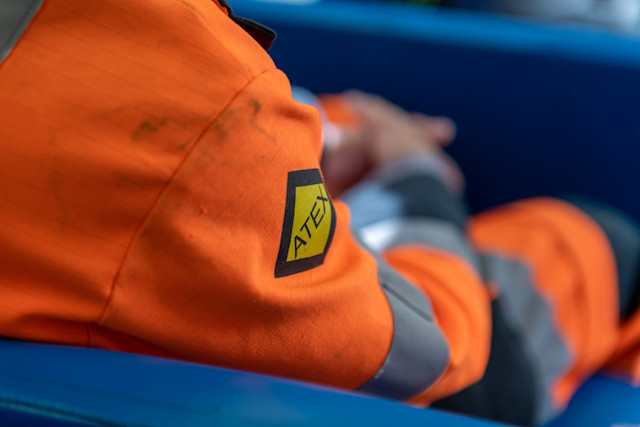Urgence gaz 0 800 028 800

Storage infrastructure, Teréga places safety at the core of its expertise
Underground natural gas storage is one of the facilities for which the prevention of industrial risks is a major priority. Thus, the operation of our two underground storage sites, Lussagnet and Izaute, naturally comes with responsibilities: protection, risk prevention and control, monitoring, etc. In a continuous improvement process.
Gas storage infrastructure, how does Teréga put safety at the centre of its action?
The attention we pay to the safety of people and equipment is rooted in our daily practice and expertise. Risk management in underground gas storage facilities is primarily based on preventive actions.
We identify and assess risks as part of the research into hazards. It describes different potential accident scenarios. It assesses the consequences and justifies corrective measures. In accordance with the regulations, we update our hazard studies at least every five years.
We implement monitoring of our equipment and installations, their maintenance and their monitoring. This guarantees that operating conditions are maintained and our facilities modernised.
Our prevention policy
We have a Major Accident Prevention Policy and a Safety Management System focused on the prevention of major accidents.
In addition, underground natural gas storage facilities are concerned by the implementation of the Technological Risk Prevention Plans (PPRT) drawn up by the prefects. Their objective is to control risks around the “SEVESO high threshold” sites by reducing the risks arising from installations and urban planning control measures.

Gas storage monitoring, another safety priority for Teréga
Backed by a safety management system, our storage monitoring is deployed at various levels through risk management measures.
In addition, underground monitoring is carried out by deposit engineers through a number of devices including control wells and sensors providing information on the mechanical integrity of the land.
Finally, in terms of monitoring, we are convinced that feedback contributes greatly to the development of our approach. Information is analysed and compiled through:
Detection of the most significant accidents and incidents,
Search for failure of a preventive measure,
Conducting investigations and analyses to provide solutions for detected failures and follow up on corrective actions,
Participation in interprofessional working groups for Feedback from other manufacturers operating the same type of facility.
Gas storage facilities, emergency-proofing anticipation
To deal with any abnormal situation, we have emergency plans that are regularly tested and updated, as well as our safety equipment, in consultation with the administration and emergency services. These plans, which are specific to each storage site, vary between Lussagnet and Izaute.
The Internal Operation Plan (IOP) defines the organisational measures, the methods of intervention and the necessary means. It is tested every year during exercises, in collaboration with the teams of the Departmental fire and rescue service of the Landes and Gers departments.
For specific well blowout accidents, a Blowout Prevention Plan (BPP) can be triggered in addition to the POI.
Our internal emergency plans are under our responsibility and can be implemented 24/7.
The Special Intervention Plan (SIP) can be activated by the Prefect if the effects of an accident go beyond the limits of our site. This plan provides for the mobilisation of public emergency services, all State services (DDT, DDTM, DREAL, etc.), but also municipalities and private actors (operators, associations, network managers, etc.). Teréga is involved in the thinking on how to organise the rescue services and participates in the exercises of this emergency plan.
We are also involved in information and preventive communication with the populations living near our sites.








